February 2024
North American P-51D Mustang
Link to Website Index: 
North American P-51D Mustang
352 Fighter Group, (aircraft of Major G E Preddy) USAAF
RAF Bodney, Norfolk, 1944
Airfix (1974 mould) 1/72

Link to Website Index: 
Text & Images © www.gengriz.co.uk
The North American P-51 Mustang started life when the British Purchasing Commission
tried to persuade North American to build P-40s for Britain under licence. North
American's response was to propose their own design, a much more modern fighter aircraft
that would match the performance of European designs. Fortunately, the commission
was willing to take the risk, and North American delivered.
Attracting the interest (and financial support) of the US Army for their own Air
Forces, the aircraft was eventually fitted with US licence-built British Rolls Royce
Merlin engines to become the excellent P-51D Mustang. Although not the most manoeuvrable
fighter available (e.g. the Bf-109 could easily out-turn it), and suffering some
potentially dangerous aerodynamic quirks from its laminar flow wing, the Mustang's
enormous 1,650 mile+ range placed it far beyond any other aircraft, allowing bomber
sorties over central Europe to be escorted by fighters for the entire trip. To paraphrase
the famous test pilot, Captain Eric "Winkle" Brown RN, for a dogfight he would have
preferred a Spitfire, but for a dogfight over Berlin, only the Mustang would have
brought him back home afterwards.
At the end of WW2, the USAAF (and then USAF) standardised on the Mustang as its sole
propeller driven fighter, with it remaining in US front line service until the end
of the Korean War and with several South American nations until the early 1970s.
Building the 1974 Airfix Mustang Kit: 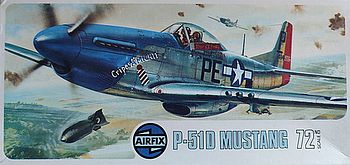
This is another nostalgia build, as I first did one of these kits in the mid 1970s.
I've always thought that the Series 2 Airfix Mustang kit was actually very good,
and first impressions of this one are certainly positive, considering when the mould
was made. It has fine engraved detail across the fuselage, with cockpit side wall
details and a reasonable instrument panel. My previous one was built as the RAAK
P-51K option, but this one will be the colourful box-art USAAF aircraft.
This one is an original 1974 issue (so 50 years old this year!) bought from a kit
vendor at Telford in 2022 for only £5, which I would say was a real bargain!
There is little to say about assembly of the cockpit and fuselage - except be careful
of that radio shelf - mine slipped down as I joined the two fuselage halves together,
requiring them to be split apart and then re-joined. To keep with the nostalgic atmosphere,
I opened up the underfuselage slot for the small Airfix stand (the mould for the
small stand is long gone, so they are collectors' pieces in their own right!). The
plastic is typical 1970s Airfix silver-grey, which is a colour I like as it provides
a good base coat for almost any top colour. Unfortunately it does tend to show mould
flow and mould edge marks that can make it difficult to judge how smooth any joint
is. The cockpit is adequately detailed for the scale and based on Internet pictures,
looks accurate enough at this scale to be left on view without needing the provided
pilot figure to hide anything. I added some simple paper seatbelts, using white glue
to attach them. Unfortunately, the canopy doesn't have an open option which is a
shame and it is also quite thick, which does lead to some distortion.
Lower wings are one-piece and attach to the fuselage before the upper sections are
added. Don't forget to open the holes for the bombs/drop tanks before assembly!
I note that the newer Airfix kit has a "flaps down" option and all of my airshow
Mustang pictures show them lowered whilst parked, so I decided to try the same on
this one (the Mustang has simple plain flaps) by cutting out the moulded parts of
the lower wing. This worked reasonably well although the lower inner edge is a little
ill defined. As I expected, the upper wing to fuselage joint has a small gap with
the fuselage that needed some filler.
The undercarriage bays provide one of the few tell-tales that this is not a modern
kit, as they have no detail and no sidewalls. They are not quite see-through as
the cockpit floor blocks them, but they are still very basic. Perhaps not a surprise,
indeed the surprises on this kit are mainly what is included rather than what is
not. I added a simple bit of plastic card to the cockpit floor in order to hide
the gaps. Fortunately the Mustang main doors remain closed once the gear completes
its cycle, so this hides a lot of what you don't want to see.
Kudos to Airfix for some very thin main and tail undercarriage bay doors; no need
to make plastic card replacements here. The undercarriage legs are also very thin,
which makes them a little fragile, although the doors can be made to provide some
extra support. Two part wheels fit together well and have a good lip which helps
with painting.
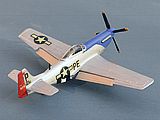
Decals provide two options; a camouflaged RAAF aircraft and a UK-based US Army aircraft,
with an un-gloved propeller provided for the Australian version if that is what you
choose. I decided to do the box-art colour scheme, which looks relatively simple,
but has its quirks. For the blue I used Humbrol H25 Blue, mixed with a little H44
to lighten it. 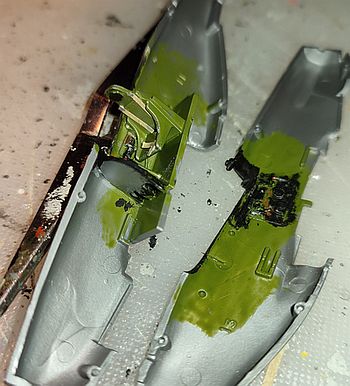 Photos of the real thing seem to show quite a dark blue, much darker
than the French Blue that Airfix and indeed other kit manufacturers recommend, so
I went for half way (which means I am definitively wrong!). The lower fuselage D-Day
black and white stripes (I assume that is what they are) are quite difficult to paint
correctly. Fortunately they measure out as 4mm wide, which just happens to be the
size of my Tamiya Tape. Setting their top line is more difficult, as the star and
bar decal will cover part of them and might show through. I winged it here and seemed
to have got away with it.
Photos of the real thing seem to show quite a dark blue, much darker
than the French Blue that Airfix and indeed other kit manufacturers recommend, so
I went for half way (which means I am definitively wrong!). The lower fuselage D-Day
black and white stripes (I assume that is what they are) are quite difficult to paint
correctly. Fortunately they measure out as 4mm wide, which just happens to be the
size of my Tamiya Tape. Setting their top line is more difficult, as the star and
bar decal will cover part of them and might show through. I winged it here and seemed
to have got away with it.
Mustang wings seem to be painted in a satin silver grey, so I used Humbrol 27001
matt aluminium for these. The fuselage and control surfaces are highly polished,
so there were done with Humbrol 11 Silver. Hand brushing these metallic paints is
quite difficult, with both colours needing a second coat to hide brush marks. Despite
being 50 year sold, the decals went on without any problems. They are slightly yellowed,
most noticeable around the D-Day stripes, but I am hoping that a period on display
in the daylight will resolve this.
This is an excellent little kit from the days when Airfix really were riding high.
With good detail, excellent fit and engraved detail, in most respects it can stand
comparison with many modern kits, and unlike its modern Airfix counterpart, it does
not have deep die-cast like panel lines that spoil what should be a sleek and smooth
high speed surface!



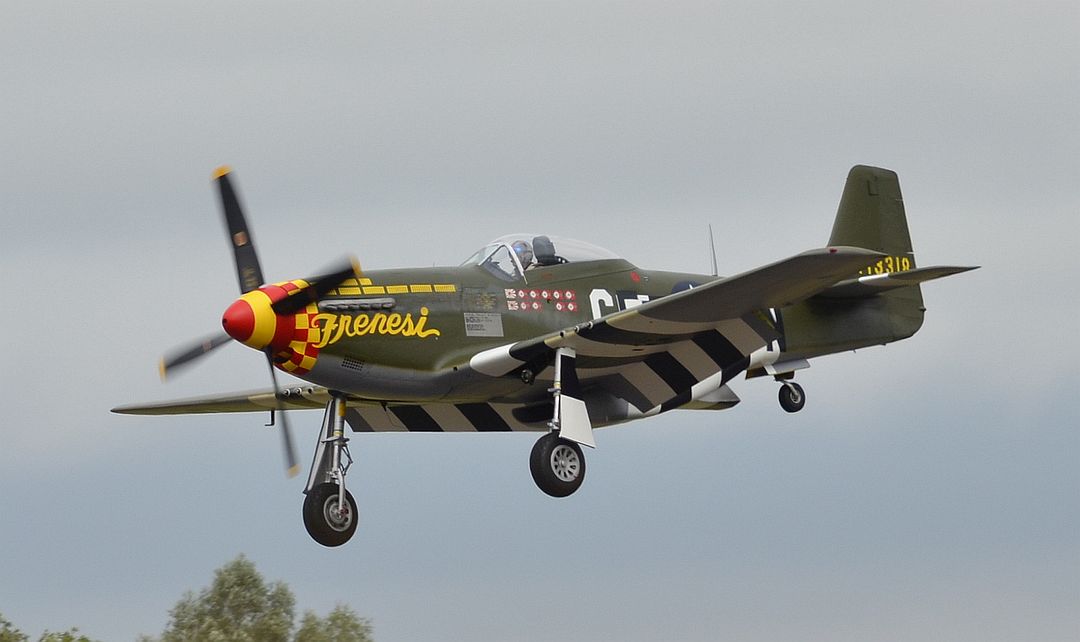
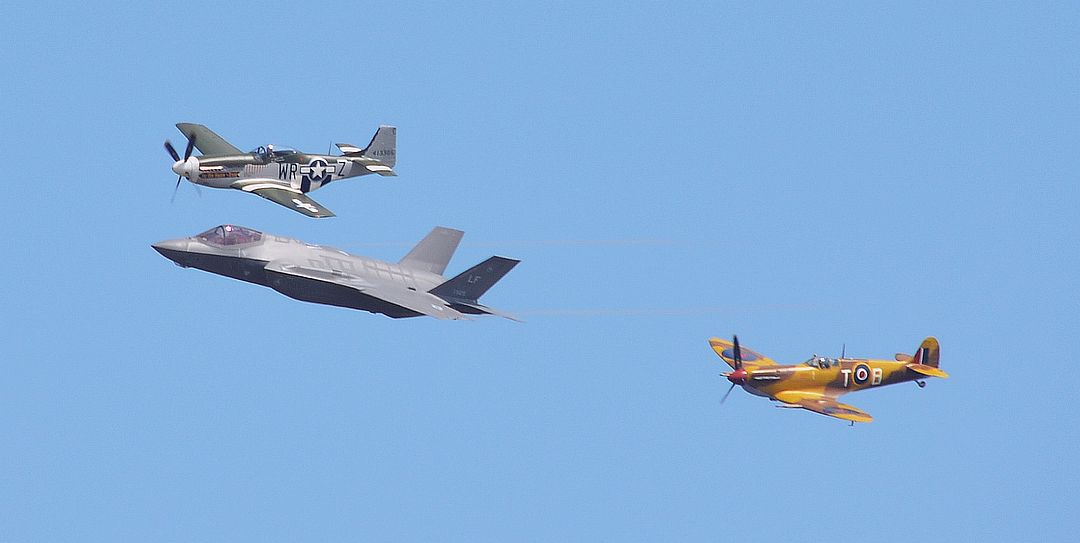
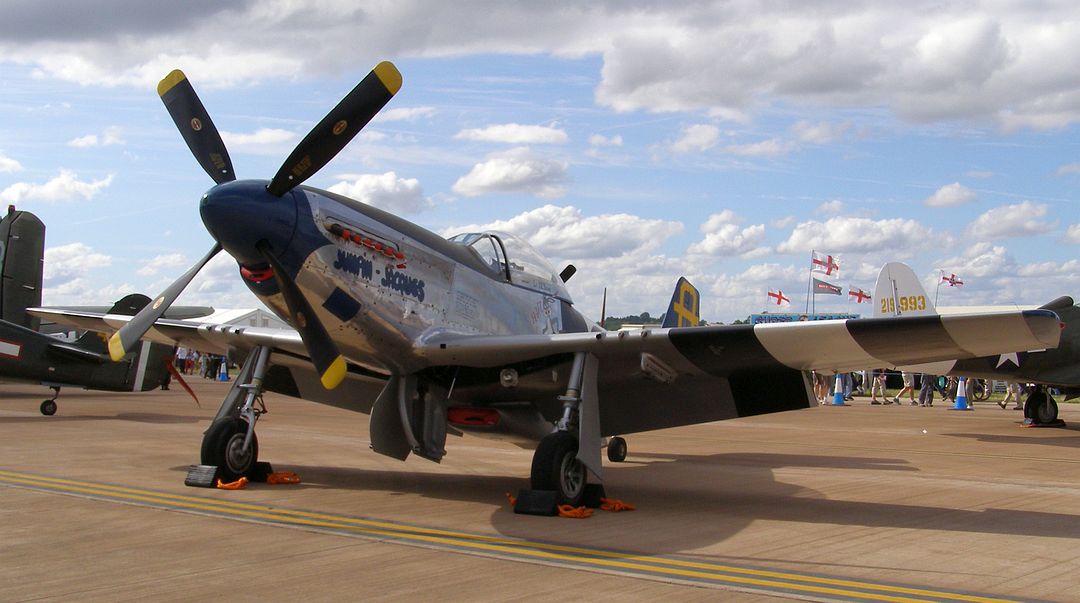
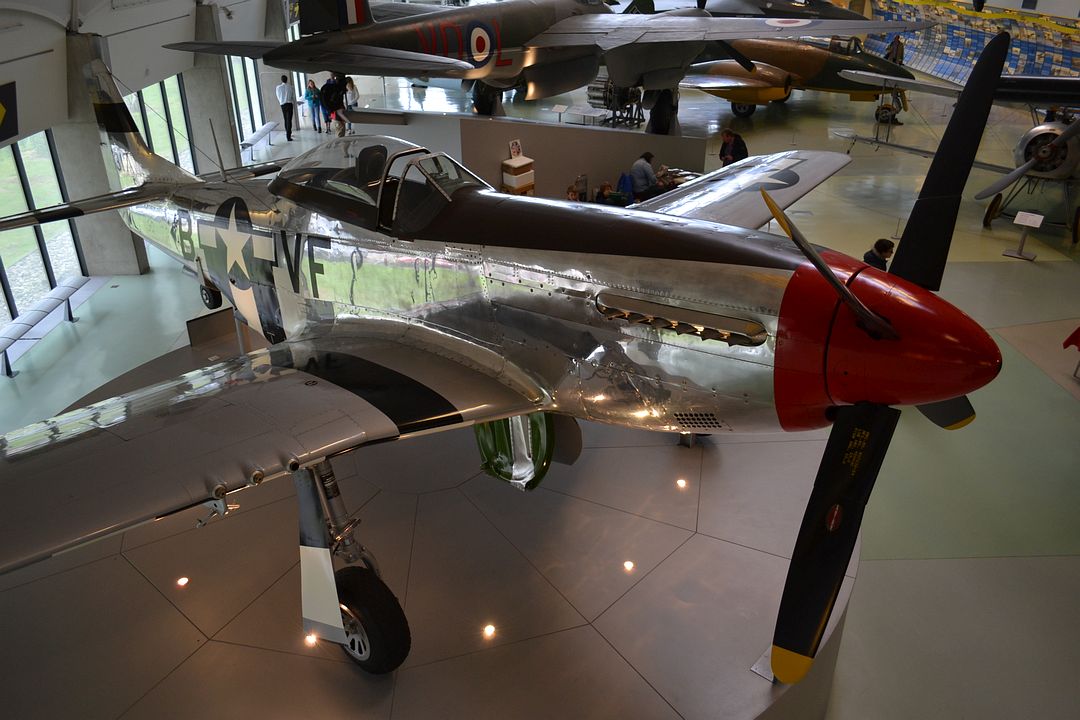

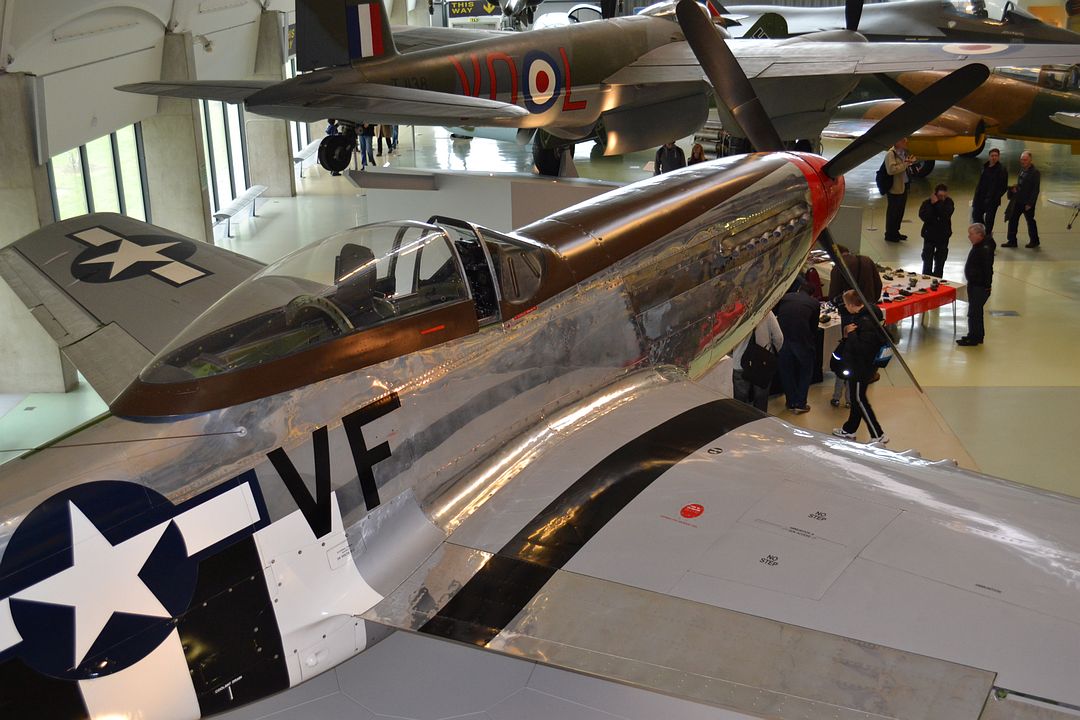

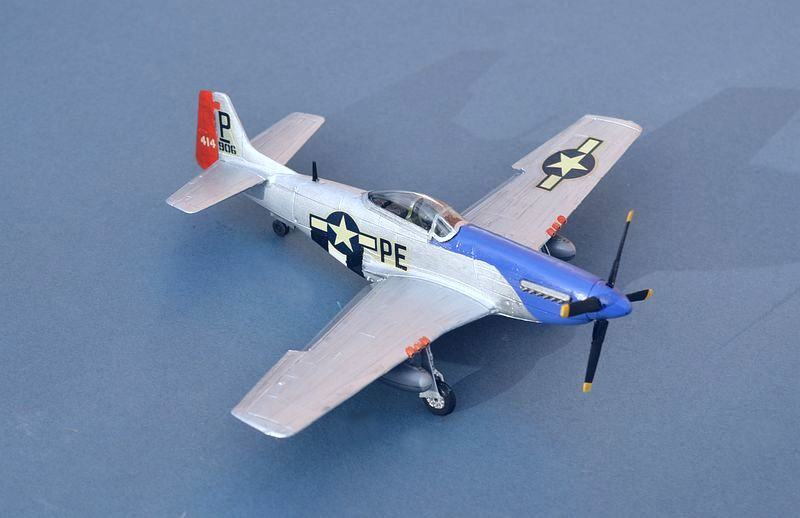

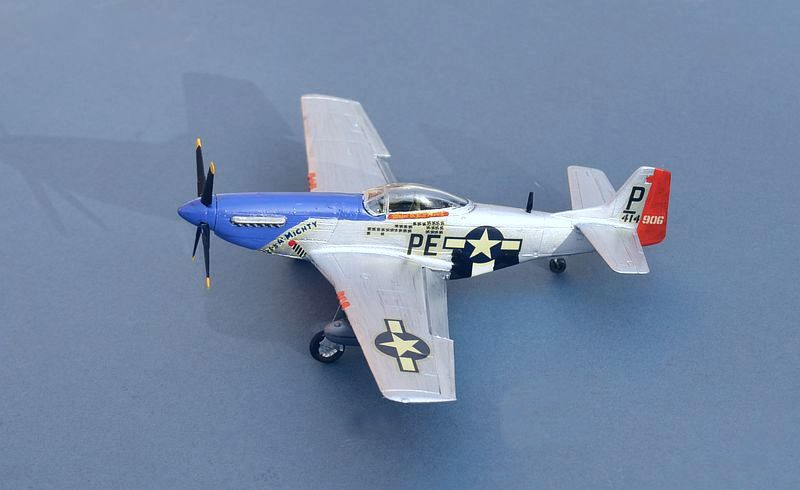
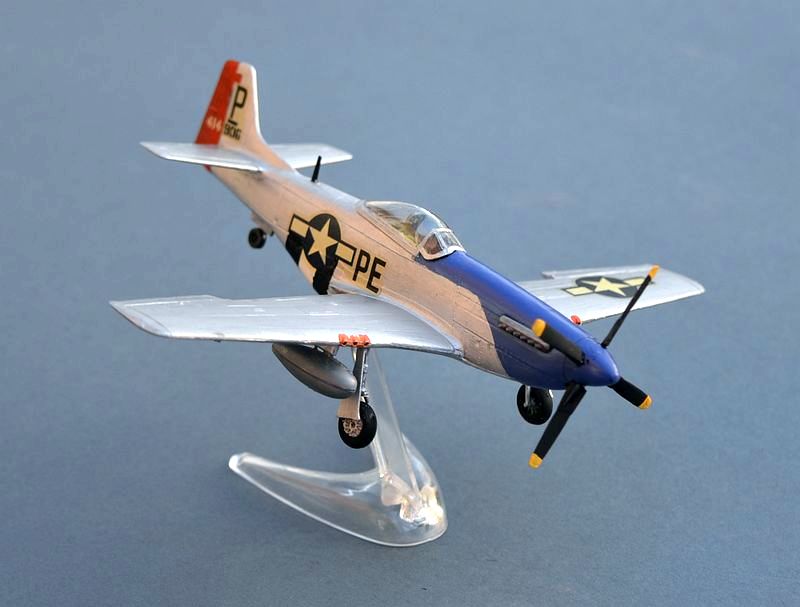

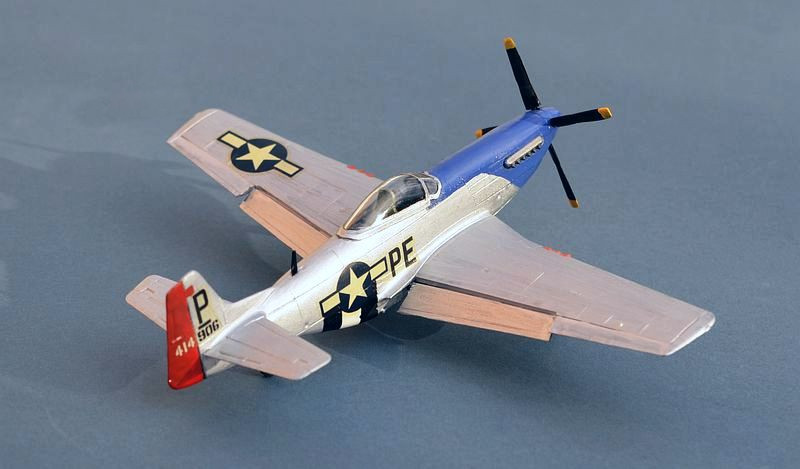
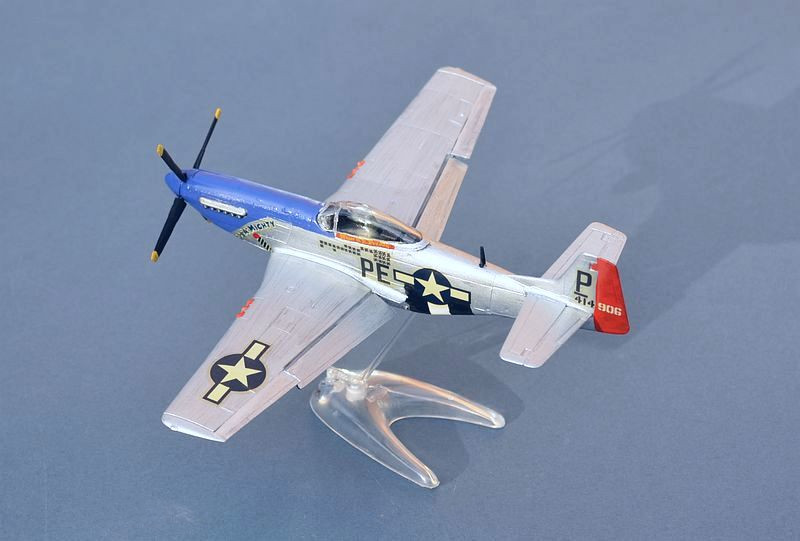
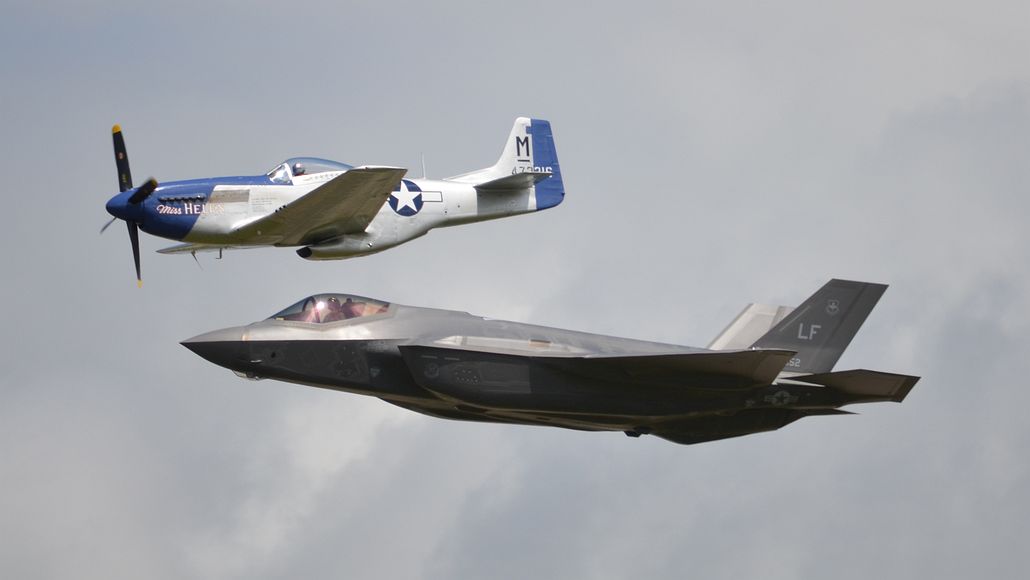



 Photos of the real thing seem to show quite a dark blue, much darker
than the French Blue that Airfix and indeed other kit manufacturers recommend, so
I went for half way (which means I am definitively wrong!). The lower fuselage D-
Photos of the real thing seem to show quite a dark blue, much darker
than the French Blue that Airfix and indeed other kit manufacturers recommend, so
I went for half way (which means I am definitively wrong!). The lower fuselage D-

















